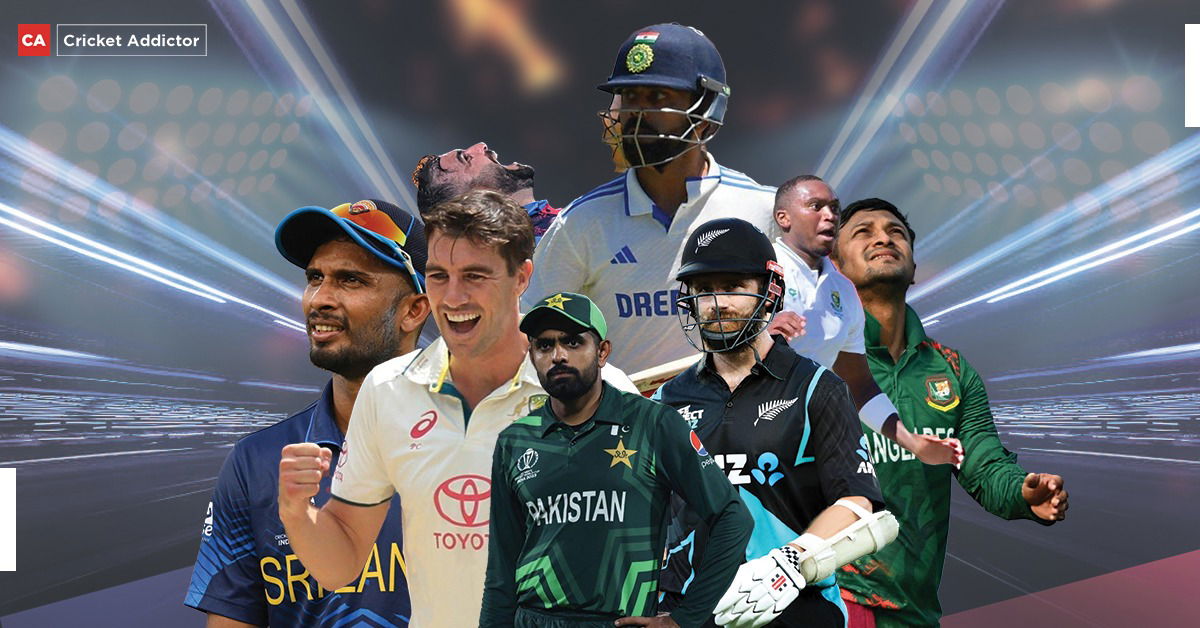White ball glory for England unmatched in red-ball arena

It’s been a landmark summer for English cricket. First, in July, the national team became World Cup winners for the first time in the tournament’s 44-year history. After previously losing in three World Cup finals, England came good by the narrowest of margins to edge out New Zealand in an exciting showdown at Lord’s. And the dust had hardly settled on this memorable occasion before they embarked on a five-Test series against Australia.
Read More: Watch – Virat Kohli Pats Rohit Sharma On The Back After His Magical Knock
Although England were unable to wrestle back ownership of the diminutive urn, which remains in the hands of their fiercest rivals, they did manage to tie what was an enthralling series 2-2 – with one Test drawn. Thanks to the brilliance of Ben Stokes, they won a remarkable match at Headingley by one wicket and sealed a share of the series with a rather more comfortable 135-run victory in the final Test at The Oval.
However, despite the thrilling Ashes matches, England’s five-day team are nowhere near as strong as their 50-over counterparts. England, who went into the World Cup with all the pressure of being the favorites with the bookies in the betting on cricket, remain top of the ranking in this form of cricket, which is remarkable when you consider how badly they performed at the previous tournament in Australia/New Zealand four years earlier.
In 2015, they failed to reach the quarter-final stage after losing four of six games, including one against Bangladesh who did reach the last eight. To counter this upturn in fortunes, the Test side are currently ranked fourth, having slipped from top spot seven years ago.
In a bid to turn around their Test fortunes, England even used World Cup opener Jason Roy at the top of the order, with the Surrey batsman making his debut in this form of cricket just a few days after the team’s stunning final triumph over the Kiwis. But during the Ashes, Roy could only muster a total of 110 runs, at an average of 13.75 from eight innings. He was even dropped for the final match at The Oval.
The 29-year-old may yet become a competent and trusted Test cricketer, but he shouldn’t really have been thrown in at the deep end against the Aussies, having never played the five-day format before July of this year.

“England cricketer Ben Stokes” (CC BY 2.0) by Ben Sutherland
England’s demise as a Test team may simply be a temporary blip – sport tends to rotate in cycles – but they may also be suffering from the more general malaise affecting the five-day game around the globe. Although the crowds attending this summer’s Ashes were as good as ever, there is nowhere near the same sort of interest in Test cricket in countries such as Pakistan, Sri Lanka, South Africa and West Indies.
The current powerhouse of the world game, India, also favour limited-overs cricket ahead of the Test game too. The World Test Championship, which finally began in 2019 following years of arguing and debate, may reverse this trend but probably not by much. It is never likely to return to its hey-day when a record 943,000 people attended the Ashes series of 1936-37 in Australia.

“Howzat – The Ashes Trent Bridge 2015” (CC BY-SA 2.0) by Airwolfhound
Test cricket will probably remain the poor relation of the limited-overs game for years to come, in the eyes of the paying public. The same goes for players who can earn so much more money hitting a white ball, than a red one. West Indian Chris Gayle, his country’s best and most famous cricketer of the new Millennium, has not played a Test match since September 2014.
Read More: Harbhajan Singh Registers For Players Draft For The Hundred
Since then, he has concentrated on the limited-overs game and has played more 400 T20 matches – most of these in tournaments such as the Indian Premier League, Australian Big Bash, Caribbean Premier League, and similar competitions in South Africa, Pakistan and Bangladesh.
With so much more money available for those taking part, while also the attraction of playing in front of huge T20 and ODI crowds, it is easy to understand why players prefer to practice skills that are more marketable for the white-ball game than the red-ball one.
The same dilemma will face England’s most talented players who know they can make a fortune travelling around the world playing in T20 leagues. Why bother learning how to play in the County Championship, in the hope of making the Test team, when there are far greater riches elsewhere. Maybe, going forward, Test teams will be populated by players who are more skilled at using a white ball, such as Roy – with the red-ball game effectively having to take a back seat.
This is cricket’s big problem right now, not just in England, but the world over. In 20 years time, will the Ashes generate the same huge interest as it does now and, more importantly, how many people will care?












